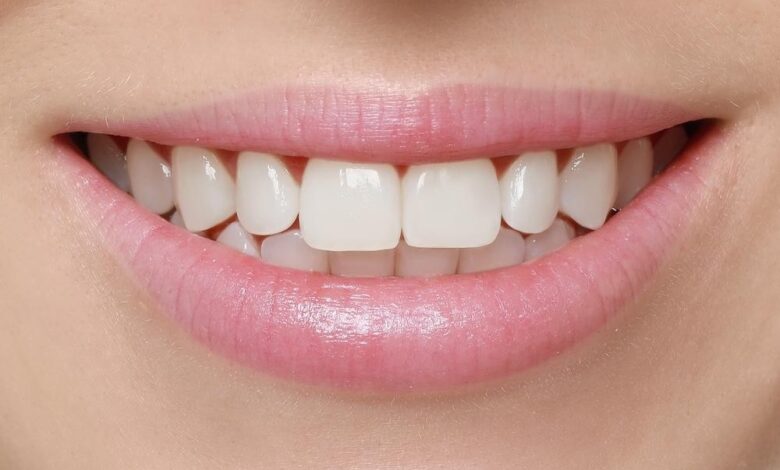6 Key Factors That Influence Composite Bonding Costs in the UK

Composite bonding is often seen as the middle ground between cosmetic refinement and affordability. It’s a treatment that delivers fast, visible results with minimal disruption to natural teeth. But when people start searching for it, one question always pops up: how much does composite bonding cost?
Here’s the truth: there’s no one-size-fits-all answer. Costs can vary significantly from one clinic to another, and even between patients at the same clinic. Instead of zeroing in on a number, it’s more useful to understand why those numbers shift. Below are six factors that can influence how much you might pay for composite bonding in the UK.
1. Number of Teeth Treated
Understanding the cost of composite bonding starts with knowing how many teeth you’re actually considering for treatment. Obvious but crucial: the more teeth involved, the higher the total cost. Many patients choose bonding for one tooth to fix a chip or discolouration. Others prefer a full smile makeover for six to ten teeth. The time, materials, and labour all scale with the number of teeth treated.
Clinics sometimes offer packages for treating multiple teeth. However, don’t assume the cost per tooth will drop a lot just because you are treating more.
It’s important to remember that when you start aesthetic smile design, you need more planning. You also need to shape the teeth proportionally, especially the front teeth. This makes the treatment more complex.
A study published in the Journal of Aesthetic and Restorative Dentistry showed that symmetry and tooth proportion significantly affect perceived attractiveness. This underscores why more teeth involved typically means more intricate work, and that takes time.
2. Complexity of the Procedure
Not all bonding jobs are created equal. Minor edge repairs are quicker and require less resin than full reshaping, gap closure, or rebuilding worn teeth. The level of artistry and precision needed directly affects the time your dentist will spend on the treatment.
Cases that require layered resin application to mimic natural translucency or achieve symmetry between multiple teeth demand more skill, more time, and more material. That all adds up.
Additionally, the condition of your teeth before treatment plays a role. If there’s uneven wear, enamel erosion, or past restorations that need to be removed or incorporated into the new structure, expect more chair time. As with most cosmetic procedures, the prep work often determines how seamless the outcome is.
3. Dentist’s Expertise and Qualifications
Cosmetic dentistry is part science, part art. A dentist who specialises in aesthetic work and has undergone advanced training will likely charge more for their time. However, with that cost comes greater attention to detail, better symmetry, and a more natural finish.
You’re not just paying for the procedure, you’re paying for the dentist’s eye for proportion, balance, and harmony in the smile. Those qualities matter if you want results that look good in both daylight and photographs.
Accredited cosmetic dentists often take part in continuous training and professional development programs, such as those run by the British Academy of Cosmetic Dentistry (BACD). These programs emphasise minimally invasive techniques and detailed treatment planning, both of which affect cost, but also outcomes.
4. Clinic Location
There’s a noticeable difference in cost between dental clinics in central London and those in smaller towns or suburbs. Practices in premium areas often have higher operating expenses, which can reflect in their pricing.
That said, higher cost doesn’t always mean better quality. Some of the best work in composite bonding can come from independent practices outside major cities. Location impacts price, but not always the outcome.
What is often overlooked is the value of clinic reputation and consistency. In competitive metropolitan areas, many clinics invest heavily in high-end facilities, digital diagnostics, and comfort-driven experiences. While these features don’t directly change the resin on your tooth, they may influence your overall experience, especially for nervous patients.
5. Materials and Technology Used
The type of resin used and the tools available to the clinician also affect pricing. High-quality, polishable composites that resist staining and wear over time cost more than budget alternatives. Practices investing in digital smile design or precision application tools may have higher treatment fees, but often deliver longer-lasting and more aesthetically pleasing results.
Some clinics also use digital imaging software to simulate post-treatment results. While optional, this technology helps both patient and dentist visualise the outcome. For many, seeing a preview of the potential smile is worth the added cost.
The composite material’s shade-matching capabilities and how well it bonds with your enamel are also key. Low-end materials appear dull over time or become stained, particularly if you’re a regular coffee or red wine drinker. Paying for higher quality upfront may save you time and money on revisions or early replacements.
6. Additional Treatments or Aftercare
Some cases of bonding are straightforward. Others might require a whitening session before the procedure to ensure colour matching. Some may include polishing visits, protective splints (for grinders), or follow-up refinements.
These additional services can affect your total cost. Always ask what the treatment includes; some clinics roll aftercare into the total price, others charge separately. A clear breakdown avoids surprises.
In some cases, patients are advised to have scale and polish appointments or to undergo minor orthodontic alignment before bonding to achieve ideal results. These steps add to the timeline and cost, but they often enhance the durability and natural appearance of the finished product.
One More Thing: Time vs Value
In cosmetic dentistry, time is money. But value isn’t always about the cheapest option. A low-cost treatment done quickly with minimal attention might cost more in revisions or dissatisfaction. Bonding should last between four and eight years when done well and maintained properly. That kind of durability makes quality work worth investing in.
A study by the British Dental Journal found that patient satisfaction with cosmetic procedures strongly correlated with the perceived quality of communication and planning, not just the final result. In short, how your dentist approaches your smile plan can be just as important as the tools they use.
There’s also a psychological benefit to consider. A 2023 study published in the journal Health Psychology Open found that improvements in self-perceived dental aesthetics led to increased social confidence and quality of life. So the value goes beyond surface-level appeal.
Composite bonding in the UK varies in price, but those numbers make more sense when you understand what goes into them. Rather than hunting for the cheapest provider, focus on who listens, plans carefully, and has evidence of consistent, natural-looking results.
The investment isn’t just in your teeth, it’s in how confidently you use them. And that’s something no price tag can capture.


